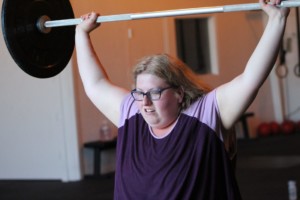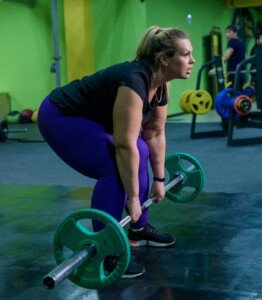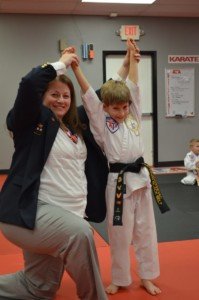
Here’s why people with Prader-Willi syndrome should train with weights (strength training).
One of the classic features of the genetic condition of Prader-Willi syndrome is that of very poor muscle tone—the result of low muscle mass. Patients also have a very slow metabolism.
Muscle is the body’s most metabolically active tissue—it burns more calories just for sustenance than any other body tissue. This is something that every fitness expert knows.
Personal trainers, such as myself in the past, push the idea of performing compound strength training to boost resting metabolism.
A person with Prader-Willi syndrome will experience an increase in resting metabolic rate by building lean muscle tissue via compound strength training.
Curling dumbbells (biceps curls) is perhaps the most common weightlifting exercise.
Beginners are notorious for spending inordinate amounts of time curling.
However, it’s a very inefficient exercise for raising metabolic rate because it essentially works only one muscle group, the biceps.
This is a very small muscle group, and working it even very hard won’t do much to increase metabolism.
To get the greatest bang for the buck, a patient with Prader-Willi syndrome should perform compound strength training: more than one muscle group at once…and large muscle groups at that.
So instead of the biceps curl, the trainee would do a deadlift, bent-over dumbbell row, standing barbell row, lat pull-down and seated row.
Of these compound exercises, the deadlift is perhaps the best.

Shutterstock/Reshetnikov_art
Though this exercise is performed in strongman and powerlifting competitions, it’s one of the simplest movements to learn!
Don’t let the simplicity or “un-fanciness” of the deadlift fool you; this is one of the best exercises ANYBODY can do, including those with Prader-Willi syndrome.
Get Cleared by a Doctor First
Scoliosis (abnormal curvature of the spine) is another feature that often comes with Prader-Willi syndrome.
The patient should be cleared by a physician for strength training, particularly the deadlift.
Some strength training movements can be contraindicated by scoliosis, though not all PWS patients have this spinal problem.
People with Prader-Willi syndrome can gain muscle mass.
This was demonstrated in a study (J Pediatr 2003;142:73-8). Children and adolescents with PWS performed standing calve raises.
This is an isolation exercise (non-compound), but was chosen for the study because it’s super easy to perform and requires only a stair to do, rather than weightlifting equipment.
The report states: In persons with PWS, a well-defined and easy-to-accomplish training program improves local body composition and has generalized effects on physical activity and capacity, opening up a new therapeutic option to improve metabolic conditions.
If this is the conclusion of a study involving mere calve raises, imagine the metabolic effect that compound weight training (e.g., deadlift, overhead barbell press, bench press, lat pull-down) would have.
Working several muscle groups at once means that much more of an increase in lean muscle tissue—translating to an increase in resting metabolism. This will have a positive effect on body weight management.
Other compound exercises to consider: flat and incline bench press, incline dumbbell press, seated chest press, leg press, kettlebell swing and weighted walking lunge.
There are many variations of the squat, but the Prader-Willi patient could benefit from whichever version he or she feels most comfortable with.
Some form of squatting (with a doctor’s clearance if the patient has scoliosis) should be included in the strength training program.
You may be thinking that a person with PWS should stick to “simpler” strength training such as using only machines, using tension bands and using very light dumbbells for various arm movements.
However, people with Prader-Willi syndrome perform in various sports for Special Olympics that require more coordination than a bench press, kettlebell swing, lat pull-down, leg press, squat and deadlift. They even do martial arts.
When Evan Matesavec was six years old, he achieved a black belt in taekwondo. At that time he was doing 25-30 pushups and has Prader-Willi syndrome.

Evan Matesavec in 2013
People with Prader-Willi Syndrome will benefit from “big” compound strength training movements.
The compound exercises I’ve mentioned require either standing in one spot, sitting or lying down (with the exception of the walking lunge).
Though my recommended strength training exercises are highly effective when performed for increasing healthy muscle mass, they are also very simple to do.

























